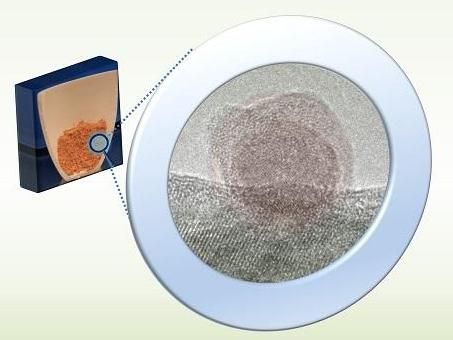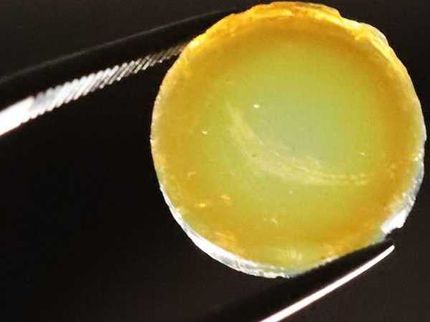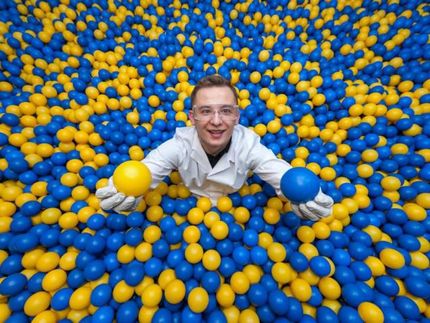Simple green synthesis is a breath of fresh air
nanoparticles of controllable composition and size have great potential in electrical, optical and chemical devices, but they must be created in a safe and cost-effective way. Kazuhiro Takanabe and coworkers from KAUST now report a simple method for synthesizing metal-sulfide nanoparticles at low temperature without using environmentally harmful solvents.

Metal-sulfide nanoparticles synthesized using a simple method in a semiclosed crucible are characterized with high-resolution TEM.
© 2017 KAUST
Metal sulfides, which are crystalline materials that combine one or more metal atoms with sulfur atoms, have excellent electronic, optical and thermoelectric properties. Nanoparticles of these materials are an exciting prospect for developing miniaturized devices. But, developing such tiny devices depends on a simple, efficient and safe method for creating metal-sulfide nanostructures, preferably on a commercial scale. The ideal method should not demand using high temperatures or solvents that have a negative environmental or human health impact.
Takanabe and his team now demonstrate a solvent-free method for creating a wide range of metal-sulfide nanoparticles using a sulfur-containing organic compound called thiourea.
Significantly, the target sulfide materials can even be synthesized in open air. "Our aim was to make synthesis both simple and robust," says Takanabe.
The team add thiourea and an oxide or nitrate of the metal (or metals) to a crucible. When heated to a relatively low temperature of about 200°C, the thiourea melts. This provides the required sulfur atoms and also plays the same role as a solvent in a conventional approach, acting as the base centers that react with the metal source.
The researchers used their method to produce complex quaternary metal-sulfide nanoparticles, namely CuGa2In3S8. An organic polymer was observed to simultaneously form around the sulfide nanoparticles, creating a capping layer. They characterized the materials using solid-state nuclear magnetic resonance (NMR) techniques and high-resolution transmission electron microscopy (TEM) to investigate its morphology and to understand the capping polymer.
Takanabe explains how the Imaging and Characterization Core Lab of KAUST was crucial at this step. "In this paper, the Core Lab undertook the materials analysis with NMR and TEM, which was crucial for relating the size of silica nanoparticles to their dielectric properties. TEM analysis produced the images of the nanoparticles, acquired at nanometer-scale resolution and hence made it easy to estimate the dimensions of the nanoparticles. Moreover, the electron prism fitted in the TEM instrument allowed determining the spatial distributions of constituent elements in the nanoparticles, which also turned out to be equally important in this work"
The results show that an organic carbon nitride polymer controllably forms on the outside, yet the exact composition of this polymer depends on the synthesis temperature and precursor ratios.
Takanabe's team indicated the utility of their nanoparticles by using them as a photocatalyst for hydrogen evolution, where the poisonous sulfur ions are made safe in an aqueous solution. "This study opens up the new synthesis protocol to metal sulfide nanoparticles, which are useful for various applications," says Takanabe.
"We are fortunate that this Core Lab provides researchers with high-quality materials analysis by procuring state-of-the-art instrumentation and the best talent," he adds.

































































